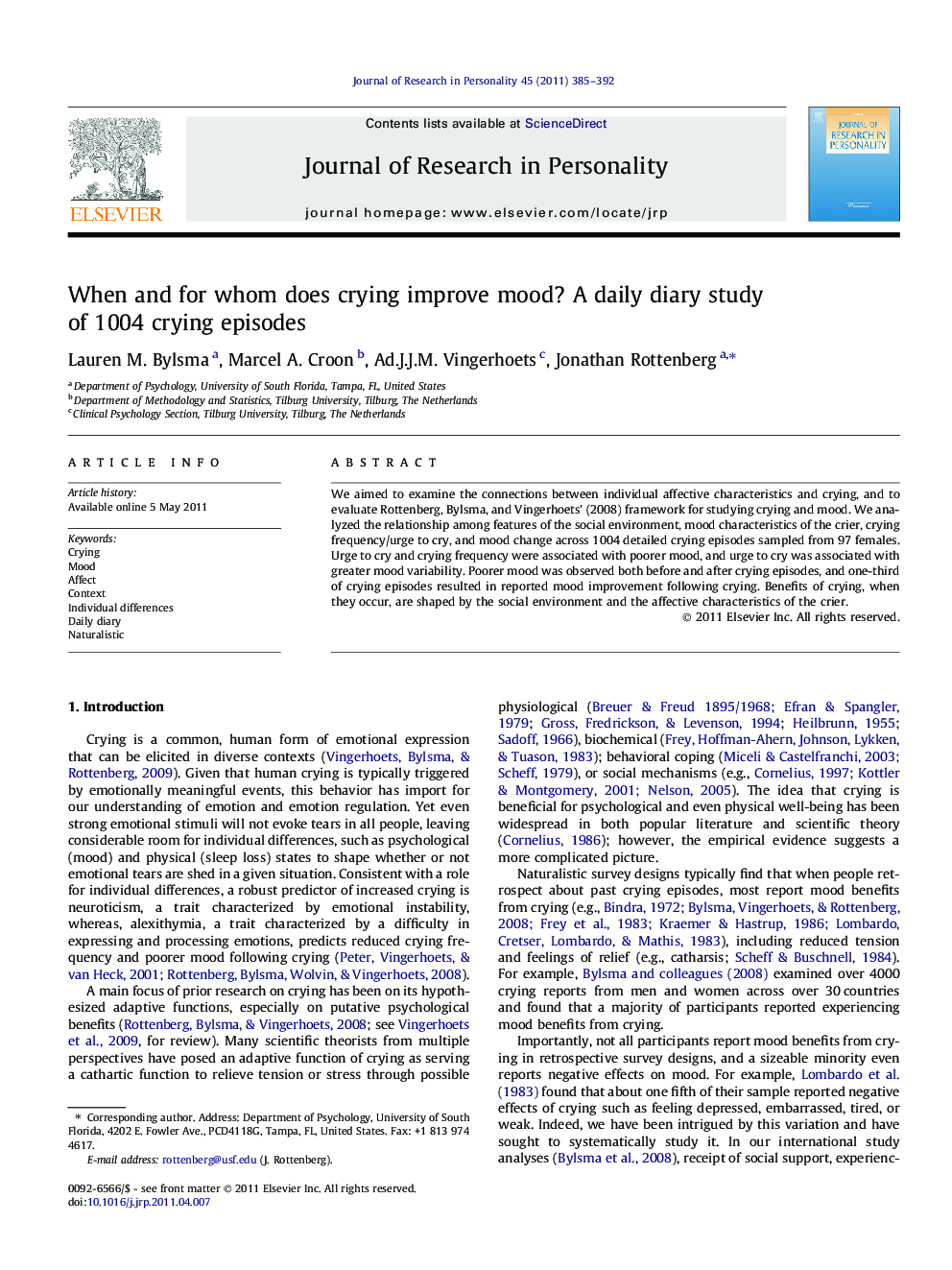| Article ID | Journal | Published Year | Pages | File Type |
|---|---|---|---|---|
| 951747 | Journal of Research in Personality | 2011 | 8 Pages |
We aimed to examine the connections between individual affective characteristics and crying, and to evaluate Rottenberg, Bylsma, and Vingerhoets’ (2008) framework for studying crying and mood. We analyzed the relationship among features of the social environment, mood characteristics of the crier, crying frequency/urge to cry, and mood change across 1004 detailed crying episodes sampled from 97 females. Urge to cry and crying frequency were associated with poorer mood, and urge to cry was associated with greater mood variability. Poorer mood was observed both before and after crying episodes, and one-third of crying episodes resulted in reported mood improvement following crying. Benefits of crying, when they occur, are shaped by the social environment and the affective characteristics of the crier.
► Daily diary study of crying behavior, mood, and the social environment. ► Urge to cry and crying frequency related to poorer mood. ► Poorer mood occurred both before and after crying episodes. ► Mood improvement following crying was reported for about 1/3 of episodes. ► Benefits of crying also related to the social environment and crying context.
